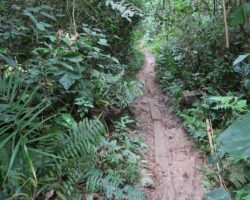At the UNFCCC Conference of Parties in Montreal 2005, a group of tropical countries initiated a process to address the issue of reducing emissions from deforestation and degradation (REDD), which has subsequently been embedded in the Paris Agreement. An estimated 80% of the global above-ground carbon stocks and 40% below-ground carbon stocks are stored in forests. Currently deforestation is the second highest driver of greenhouse gas emissions contributing an estimated 15% of global emissions. As such it is a priority to slow down the rate of deforestation and degradation of forests in order to effectively tackle the issue of climate change. The REDD+ policy process requires countries to have operational National Forest Monitoring Systems (NFMS) and Measuring, Reporting and Verification (MRV) systems. The role of Earth Observation (EO) in NFMS and MRV is well-established but many countries still face technical and resource challenges in implementing these programmes.

The EO4SD Forest Management cluster provides solutions to the development of operational MRV systems, deforestation, degradation and land use change assessments and biomass mapping. These products allow for the tracking of relevant forest and carbon stock changes in a spatially explicit manner and can feed into national GHG estimation and reporting. The suite of geo-spatial products can be used for monitoring both tropical humid and dry forests globally.




